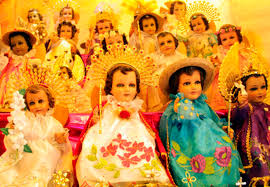https://1drv.ms/w/s!AhTAZYYbQxFUpibQIlQ49MtBbKR-
Holiday: Halloween
·
Halloween
or Halloween Night is a modern celebration.
·
It is
celebrated internationally on the night of October 31, especially in the United
States and to a lesser extent in other places such as Spain and Latin America.
·
It has
its roots in the ancient Celtic festival known as Samhain, which means
"end of summer" and was celebrated at the end of the harvest season
in Ireland to start the "Celtic New Year", coinciding with the autumn
solstice.
·
During
that night the spirits of the deceased were believed to walk among the living,
and sacred festivals and rites were performed that included communication with
the dead. Furthermore, it was customary to place a lighted candle on the
windows so that the dead "found their way."
·
The
typical Halloween activities are the famous Trick or Treat and costume parties,
in addition to bonfires, visiting haunted houses, jokes, reading scary stories
and watching horror movies.
·
Since
Halloween coincides with the annual apple harvest season, caramel apples (known
as caramel apples outside of North America) and sweet apples are common during
the holidays.
Festival: Oktoberfest
·
The
Oktoberfest is the largest and most popular German beer festival in the world,
held between the months of September and October in the Bavarian city of Munich
since 1810.
·
It is the
largest popular festival in Germany and one of the largest in the world, with
average annual visits of over six million visitors.
·
It lasts
from 16 to 18 days, starting on the first Saturday after September 15. It takes
place in the countryside known as Theresienwiese (Prado de Teresa), in the
immediate vicinity of Munich city center, near the Central Station
(Hauptbahnhof).
·
Tradition
begins to lean towards being dressed in typical clothes, leather shorts. They
are days of joy, beer and sausages.
·
The
celebration begins with a parade that is led by the mayor and represents the
arrival of the Wirte, who owned the beer, at the venue. This event is
considered as the opening to the event, which in turn is accompanied by a
cheerful band of music; then, at 12 o'clock at night, the mayor uncovers a
barrel of beer launching 12 salvos of cannon to start serving and enjoying
fully.
·
Then
there is also a parade in typical clothes, which has been held annually since
1950 and makes the event picturesque and enjoyable despite being 7 kilometers
to go from the castle to the venue.
























